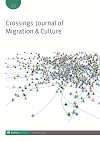
Full text loading...

This article explores the embedded and embodied ‘culture of geographic mobility’ across contemporary visual artists’ careers and its impacts on their feelings towards mobility and home. This article uncovers the under-explored aspects about artists’ lifestyles, for whom geographic cross-border mobilities across Europe are a necessity throughout these artists’ careers. In addition to changes in mobility patterns, pace, motives over their careers, there are also changes in their feelings towards mobilities and home across their careers and as they become older (career and age wise). Mobile careers can often start with feelings of freedom and comfort in having mobile homes. However, the effects of having mobile careers long-term can result in feelings of ambivalence, tensions and anguish towards mobility vis-à-vis home. This longitudinal study draws upon two sets of interviews conducted eight years apart with the same fifteen contemporary visual artists from Lithuania, Latvia and Estonia. They were first interviewed in 2013 at the emerging stage in their career and they were interviewed again in 2021 at the established stage in their career. The nexus between careers, mobility and home helps to expand the ‘mobilities paradigm’, by sharing new knowledge on contemporary visual artists’ mobilities and its effects on feelings of home across their careers.

Article metrics loading...

Full text loading...
References


Publication Date:
https://doi.org/10.1386/cjmc_00081_1 Published content will be available immediately after check-out or when it is released in case of a pre-order. Please make sure to be logged in to see all available purchase options.